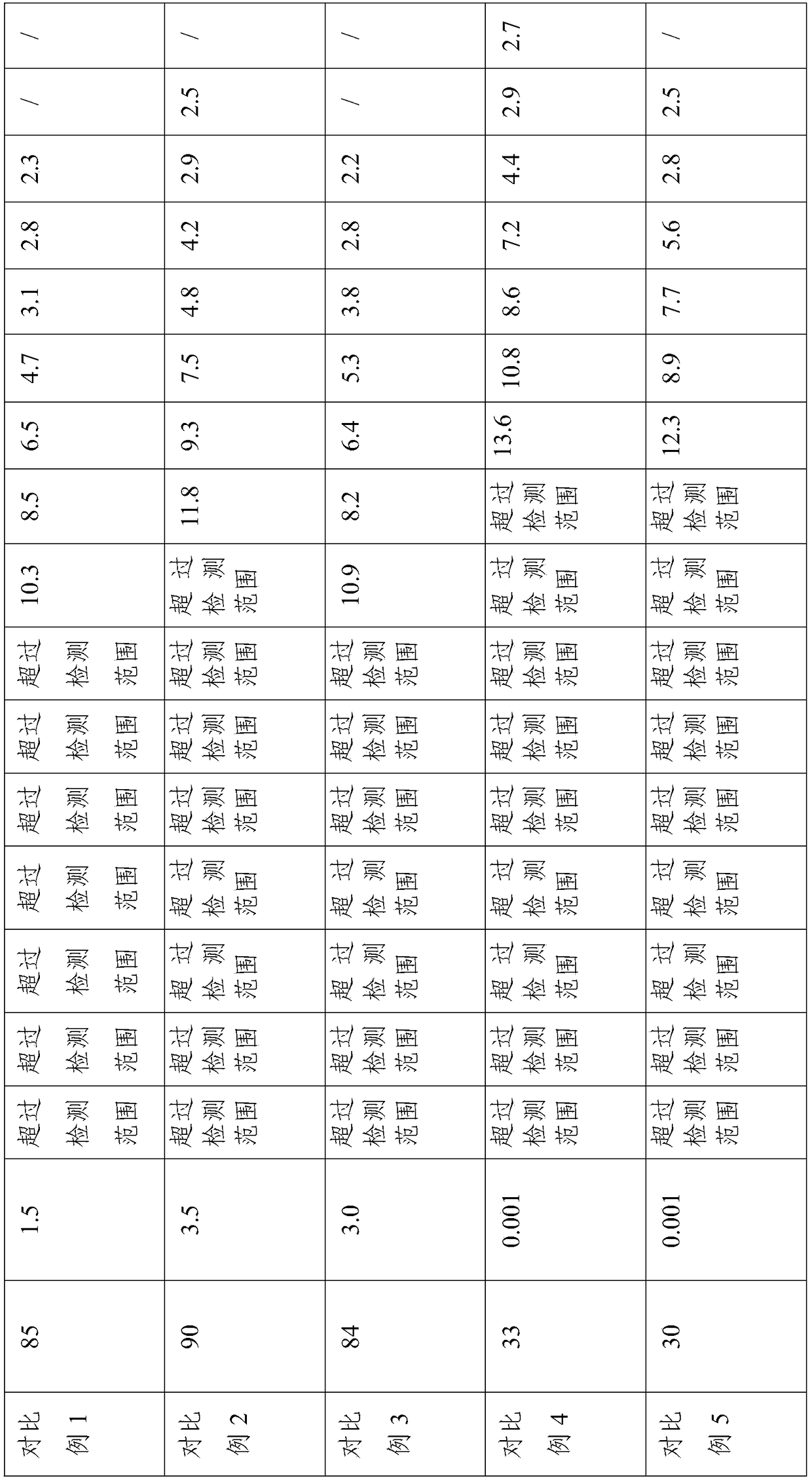Condensation and washing method of perfluoroethylene propylene resin
A perfluoroethylene propylene and polyperfluoroethylene propylene technology, applied in the polymer field, can solve the problems of inability to fully coagulate and separate out polyperfluoroethylene propylene resin, waste of polyperfluoroethylene propylene resin, and unfavorable industrial production, etc. Wash removal, easy steps, environmentally friendly results
- Summary
- Abstract
- Description
- Claims
- Application Information
AI Technical Summary
Problems solved by technology
Method used
Image
Examples
Embodiment 1
[0032] This embodiment relates to a preparation method of polyperfluoroethylene propylene resin, comprising the following steps:
[0033] 1) Add ion-free water at room temperature to the polyfluoroethylene propylene emulsion, adjust the specific gravity of the emulsion to 1.08, start stirring, and physically break the emulsion at 1200 rpm for 25 minutes;
[0034] 2) Add coagulant ammonium bicarbonate with a resin solid content of 2% to the above emulsion, and continue to stir at the same speed until the polyperfluoroethylene propylene emulsion is completely demulsified;
[0035] 3) Wash it several times with normal temperature deionized water with a volume ratio of 1 / 2 to 2 / 3 to the polyperfluoroethylene propylene precipitated from demulsification, until the conductivity of the washing water is lower than 3 us / cm after detection, That's it.
Embodiment 2
[0037] This embodiment relates to a preparation method of polyperfluoroethylene propylene resin, comprising the following steps:
[0038] 1) Add ion-free water at room temperature to the polyfluoroethylene propylene emulsion, adjust the specific gravity of the emulsion to 1.06, start stirring, and physically demulsify the emulsion at 1600 rpm for 23 minutes;
[0039] 2) Add coagulant ammonium bicarbonate with a resin solid content of 1.8% to the above emulsion, and continue to stir at the same speed until the polyperfluoroethylene propylene emulsion is completely demulsified;
[0040] 3) Wash it several times with normal temperature deionized water with a volume ratio of 1 / 2 to 2 / 3 to the polyperfluoroethylene propylene precipitated from demulsification, until the conductivity of the washing water is lower than 3 us / cm after detection, That's it.
Embodiment 3
[0042] This embodiment relates to a preparation method of polyperfluoroethylene propylene resin, comprising the following steps:
[0043] 1) Add ion-free water at room temperature to the polyfluoroethylene propylene emulsion, adjust the specific gravity of the emulsion to 1.09, start stirring, and physically break the emulsion at 1400 rpm for 25 minutes;
[0044] 2) Add coagulant ammonium bicarbonate with a resin solid content of 1.5% to the above emulsion, and continue to stir at the same speed until the polyperfluoroethylene propylene emulsion is completely demulsified;
[0045] 3) Wash it several times with normal temperature deionized water with a volume ratio of 1 / 2 to 2 / 3 to the polyperfluoroethylene propylene precipitated from demulsification, until the conductivity of the washing water is lower than 3 us / cm after detection, That's it.
PUM
| Property | Measurement | Unit |
|---|---|---|
| Conductivity | aaaaa | aaaaa |
Abstract
Description
Claims
Application Information
 Login to View More
Login to View More - R&D
- Intellectual Property
- Life Sciences
- Materials
- Tech Scout
- Unparalleled Data Quality
- Higher Quality Content
- 60% Fewer Hallucinations
Browse by: Latest US Patents, China's latest patents, Technical Efficacy Thesaurus, Application Domain, Technology Topic, Popular Technical Reports.
© 2025 PatSnap. All rights reserved.Legal|Privacy policy|Modern Slavery Act Transparency Statement|Sitemap|About US| Contact US: help@patsnap.com


